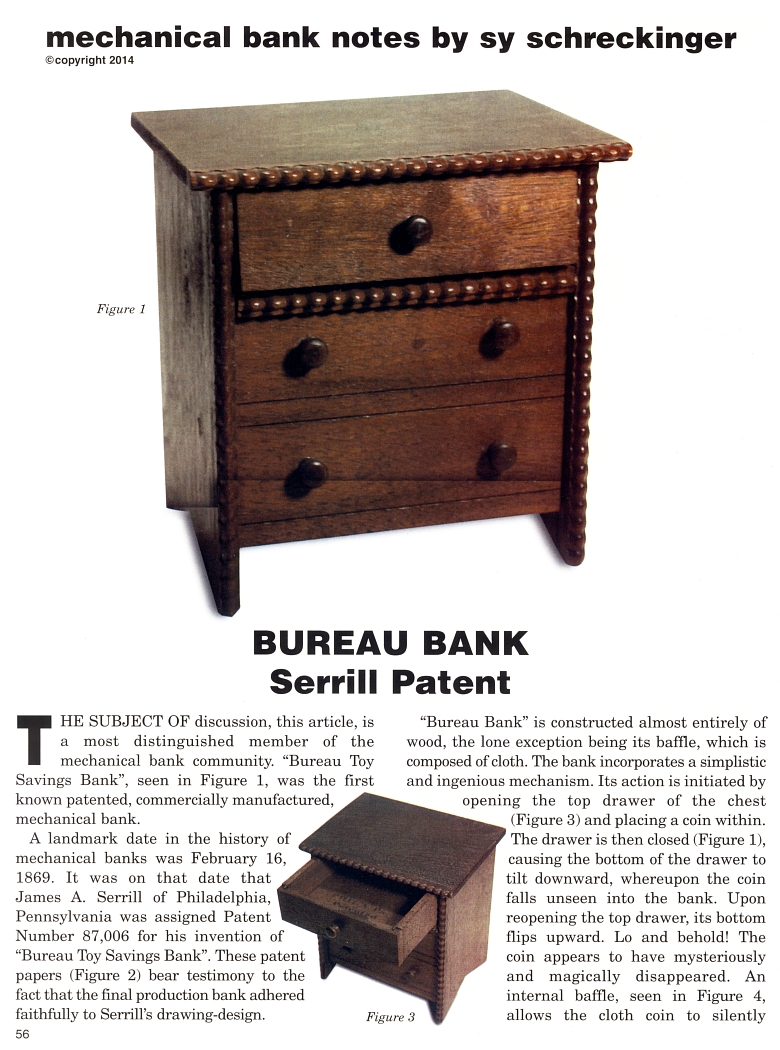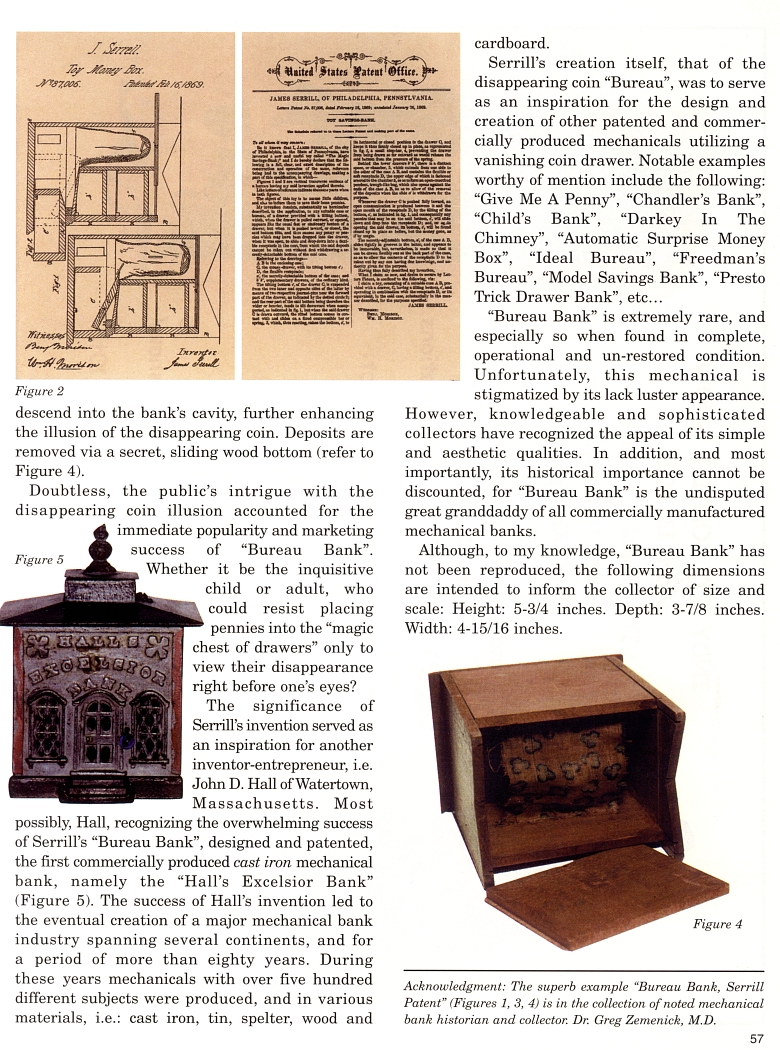|
Bureau Bank —
Serrill Patent
by Sy Schreckinger – ANTIQUE TOY WORLD Magazine – April, 2014
THE SUBJECT OF discussion, this article, is a most distinguished member
of the mechanical bank community. "Bureau Toy Savings Bank", seen in
Figure 1, was the first known patented, commercially manufactured,
mechanical bank.
A landmark date in the history of mechanical banks was February 16,
1869. It was on that date that James A. Serrill of Philadelphia,
Pennsylvania was assigned Patent Number
87,006 for his invention of
"Bureau Toy Savings Bank". These patent papers (Figure 2) bear testimony
to the fact that the final production bank adhered faithfully to Serrill's drawing-design.
"Bureau Bank" is constructed almost entirely of wood, the lone
exception being its baffle, which is composed of cloth. The bank
incorporates a simplistic and ingenious mechanism. Its action is
initiated by opening the top drawer of the chest (Figure 3) and placing
a coin within. The drawer is then closed (Figure 1), causing the bottom
of the drawer to tilt downward, whereupon the coin falls unseen into the
bank. Upon reopening the top drawer, its bottom flips upward. Lo and
behold! The coin appears to have mysteriously and magically disappeared.
An internal baffle, seen in Figure 4, allows the cloth coin to silently
descend into the bank's cavity, further enhancing the illusion of the
disappearing coin. Deposits are removed via a secret, sliding wood
bottom (refer to Figure 4).
Doubtless, the public's intrigue with the disappearing coin
illusion accounted for the immediate popularity and marketing success of
"Bureau Bank". Whether it be the inquisitive child or adult, who could
resist placing pennies into the "magic chest of drawers" only to view
their disappearance right before one's eyes?
The significance of Senill's invention served as an inspiration for
another inventor-entrepreneur, i.e. John D. Hall of Watertown,
Massachusetts. Most possibly, Hall, recognizing the overwhelming success
of Serrill's "Bureau Bank", designed and patented, the first
commercially produced cast iron. mechanical bank, namely the "Hall's
Excelsior Bank"
(Figure 5). The success of Hall's invention led to the eventual creation
of a major mechanical bank industry spanning several continents, and for
a period of more than eighty years. During these years mechanicals with
over five hundred different subjects were produced, and in various
materials, i.e.: cast iron, tin, spelter, wood and cardboard.
Serrill's creation itself, that of the disappearing coin "Bureau",
was to serve as an inspiration for the design and creation of other
patented and commercially produced mechanicals utilizing a vanishing
coin drawer. Notable examples worthy of mention include the following:
"Give Me A Penny", "Chandler's Bank", "Child's Bank", "Darkey In The
Chimney", "Automatic Surprise Money Box", "Ideal Bureau", "Freedman's
Bureau", "Model Savings Bank", "Presto 'hick Drawer Bank", etc...
"Bureau Bank" is extremely rare, and especially so when found in
complete, operational and un-restored condition. Unfortunately, this
mechanical is stigmatized by its lack luster appearance. However,
knowledgeable and sophisticated collectors have recognized the appeal of
its simple and aesthetic qualities. In addition, and most importantly,
its historical importance cannot be discounted, for "Bureau Bank" is the
undisputed great granddaddy of all commercially manufactured mechanical
banks.
Although, to my knowledge, "Bureau Bank" has not been reproduced,
the following dimensions are intended to inform the collector of size
and scale: Height: 5-3/4 inches. Depth: 3-7/8 inches. Width: 4-15/16
inches.
Acknowledgment: The superb example -Bureau Bank, Serrill Potent-
(Figures 1, :3, 41 is in the collection of noted mechanical bank
historian and collector Dr. Greg Zemeniek, M.D. |


